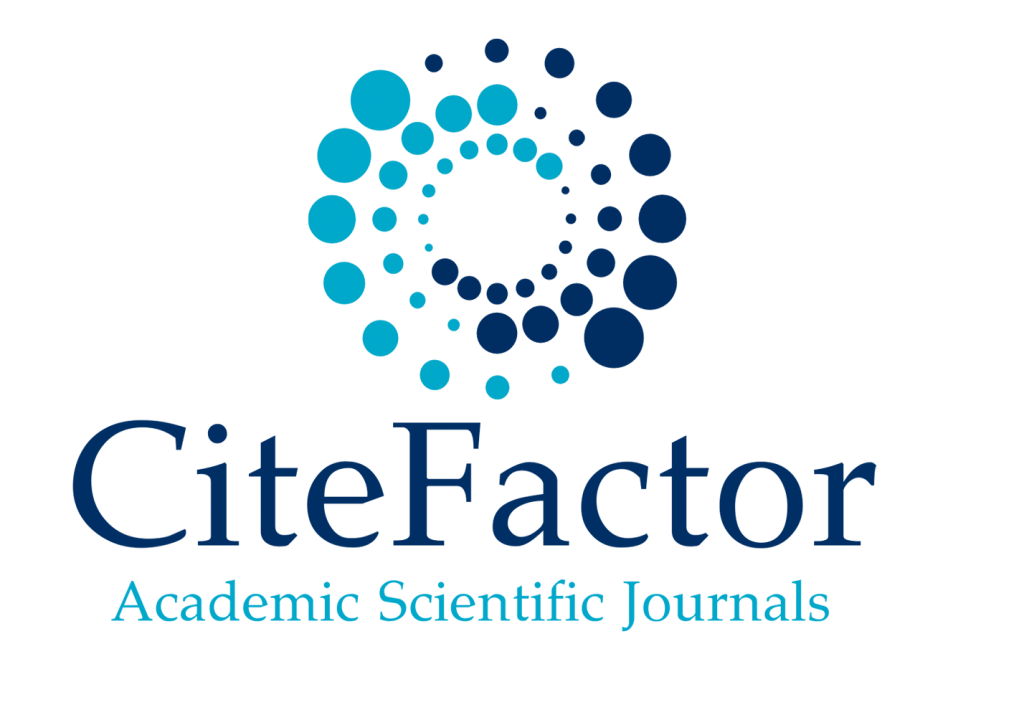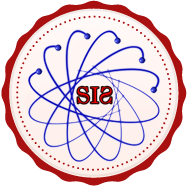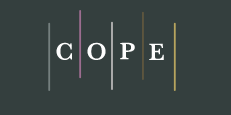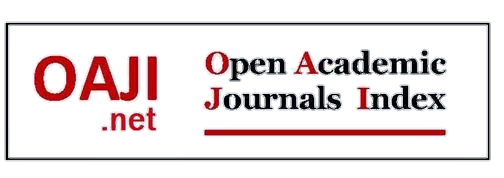The Influence of Professionalism and Education on the Ability of TNI Intelligence Soldiers to Detect Misinformation on the Resolution of Papua Using Communication Media as Moderation
1Pardianto Luki, 2Wibowo Imam, 3Utomo Fajar Cahyo
1Master of Management Student, Universitas Krisnadwipayana
2,3Lecturer, Universitas Krisnadwipayana
https://doi.org/10.47191/jefms/v8-i4-48
ABSTRACT:
The purpose of this study was to examine how professionalism, education, and communication media affect ability as well as how communication media might act as a moderator of the effects of professionalism and education on ability. To address the development and validation of the research hypothesis, this study employs a quantitative design technique. Soldiers from the TNI Intelligence Unit's individual analytic unit participated in this explanatory study, which tests the nature of the link and influence between factors. The study's findings demonstrated that education has a positive and significant impact on ability, professionalism has a positive but not significant effect on ability, communication media has a positive and significant impact on ability, communication media does not moderate the impact of professionalism on ability, and communication media reduces the impact of education on TNI Intelligence Unit soldiers' ability. To determine the long-term effects of schooling on the growth of army skills, more studies can carry out longitudinal studies.
KEYWORDS:
Ability, Professionalism, Education, Communication Media
REFERENCES:
1) Abdillah, W., & Hartono, J. (2016). Partial Least Squares (PLS): Alternative Structural Equation Modeling (SEM) in Business Research. Yogyakarta: Andi Publisher.
2) Akkad, A., et al. (2019). The Impact of Professionalism on Skills and Abilities of Healthcare Workers: A Systematic Review. BMC Health Services Research, 19(1), 327. DOI: 10.1186/s12913-019-4054-3.
3) Andersen, J., & West, R. (2020). Tactical Training and Strategic Education in Military Settings. Military Education Quarterly, 12(4), 301-320.
4) Baran, S. J. (2009). Introduction to Mass Communication: Media Literacy and Culture (6th ed.). Boston: McGraw-Hill.
5) Bawden, D., & Robinson, L. (2020). Impact of Digital Communication on Learning Outcomes: A Moderated Mediation Model." Journal of Computer Assisted Learning, 36(3), 335-349. DOI: 10.1111/jcal.12421.
6) Bowers, A. A., & Schaefer, A. R. (2021). Education, Skills, and Earnings: Evidence from the National Longitudinal Survey of Youth. Economics of Education Review, 81, 102068. DOI: 10.1016/j.econedurev.2021.102068.
7) Cangara, H. (2006). Introduction to Communication Science. Jakarta: PT Raja Grafindo Persada.
8) Chen, L., Zhang, Y., & Liu, Y. (2022). The Impact of Professionalism on Team Communication: The Moderating Role of Media. International Journal of Project Management, 40(3), 215-227. DOI: 10.1016/j.ijproman.2021.12.004.
9) Chung, J. Y., & Noh, H. (2021). Exploring the Relationship Between Professionalism and Job Performance in IT Professionals. Journal of Business Research, 123, 279-287. DOI: 10.1016/j.jbusres.2020.09.058.
10) Cohen, D., & Prusak, L. (2017). In Good Company: How Social Capital Makes Organizations Work. Harvard Business Press.
11) Couldry, N., & Hepp, A. (2020). The Mediated Construction of Reality. Cambridge: Polity Press.
12) Creswell, J. W. (1994). Research Design: Qualitative and Quantitative Approaches. SAGE Publications.
13) Crossman, J. (2017). Professionalism in the Workplace: A Study of the Relationship Between Professional Attitudes and Workplace Success. Journal of Management, 3(2), 115-130.
14) Deborah, S. (2013). Foundations of Professionalism. Journal of Organizational Behavior.
15) Effendy, OU (2002). Communication Science: Theory and Practice. Bandung: PT Remaja Rosdakarya.
16) Feng, J., Liu, Q., & Chen, Z. (2022). The Role of Communication in Learning: Moderating Effects of Media on Education Outcomes. Journal of Educational Technology & Society, 25(1), 142-158.
17) Ferguson, C. J., & Norr, D. A. (2018). Education and Cognitive Ability: The Role of Formal Education in Cognitive Skills Development. Educational Psychology Review, 30(4), 1-20. DOI: 10.1007/s10648-017-9416-4.
18) Flew, T. (2020). Understanding Global Media. London: Palgrave Macmillan.
19) Ghozali, I. (2008). Structural Equation Modeling: Alternative Method with Partial Least Square (PLS). Semarang: Diponegoro University Publishing Agency.
20) Ghozali, I. (2014). Structural Equation Modeling: Alternative Method with Partial Least Square (PLS). 4th Edition. Semarang: Diponegoro University Publishing Agency.
21) Haryanto, S. (2020). Strategy for Improving the Capabilities of TNI Intelligence Soldiers in Facing Modern Threats. Journal of Defense Science, 8(1), 45-62.
22) Jackson, D. (2019). Soft Skills and Professionalism for Career Development. New York: Academic Press.
23) Jenkins, H., Ford, S., & Green, J. (2020). Spreadable Media: Creating Value and Meaning in a Networked Culture (Updated ed.). New York: NYU Press.
24) Kumar, R., & Sinha, A. (2019). Exploring the Interaction Between Professionalism and Communication Technology in Organizations. Journal of Organizational Behavior, 40(5), 516-533. DOI: 10.1002/job.2375.
25) Lee, J. H., & Wong, T. W. (2021). Communication Media as a Moderator in the Relationship Between Professionalism and Performance. Journal of Management Studies, 58(6), 1401-1425. DOI: 10.1111/joms.12662.
26) Likert, R. (1932). A Technique for the Measurement of Attitudes. Archives of Psychology, 140, 1-55.
27) Litz, B. T., & Maguen, S. (2018). The Impact of Military Training on Resilience and Mental Health. Journal of Military Psychology, 8(3), 221-239.
28) Livingstone, S., & Das, R. (Eds.). (2020). The Routledge Handbook of Digital Media and Children. New York: Routledge.
29) Madianou, M. (2020). A Second-Order Crisis of Mediation? Datafication, Inequality, and the Rise of the Superfluous. Media, Culture & Society, 42(7-8), 1417-1433.
30) Malhotra, N. K. (2009). Marketing Research: An Applied Orientation (6th ed.). Pearson Prentice Hall.
31) McQuail, D., & Deuze, M. (2020). McQuail's Media and Mass Communication Theory (7th ed.). London: SAGE Publications.
32) Morgan, C. A., Rasmusson, A., Wang, S., Hoyt, G., & Southwick, S. M. (2017). Cognitive and Emotional Abilities in Military Training and Performance. International Journal of Stress Management, 14(2), 185-202.
33) Nguyen, T. (2020). Digital Literacy and Online Learning: Challenges and Opportunities. International Journal of Education and Development, 29(3), 301-320.
34) Nguyen, T. (2020). Digital Literacy and Professionalism: Ethical Communication in the Digital Era. International Journal of Business and Management, 29(3), 45-62.
35) Reeve, J., & Gough, D. (2019). The Role of Education in Developing Work-Related Skills and Abilities: A Systematic Review. Educational Research Review, 27, 1-14. DOI: 10.1016/j.edurev.2019.100289.
36) Robbins, S. P., & Judge, T. A. (2017). Organizational Behavior (17th ed.). Pearson.
37) Robbins, S.P., & Judge, T.A. (2018). Organizational Behavior (17th ed.). Pearson Education.
38) Rosen, L.D., & Lim, A.F. (2020). Professionalism and Its Relationship to Job Performance: A Study of Teachers. Educational Administration Quarterly, 56(2), 263-299. DOI: 10.1177/0013161X19868125.
39) Roth, S., & Hurst, C. (2017). Professionalism and Educational Outcomes: Implications for Ability Development. Educational Research Review, 20, 1-12. DOI: 10.1016/j.edurev.2016.12.001.
40) Sakurai, S., Kato, T., & Tsukahara, T. (2020). The Impact of Education on Job-Related Skills and Abilities. International Journal of Educational Management, 34(4), 681-695. DOI: 10.1108/IJEM-05-2019-0209.
41) Severin, W. J., & Tankard, J. W. (2001). Communication Theories: Origins, Methods, and Uses in the Mass Media (5th ed.). New York: Longman.
42) Straubhaar, J., & LaRose, R. (2004). Media Now: Understanding Media, Culture, and Technology (4th ed.). Belmont, CA: Wadsworth.
43) Subagyo, S. (2019). Communication in TNI Intelligence Operations: Skills Needed by Intelligence Soldiers. Military Communication Journal, 5(2), 118-135.
44) Sugiyono. (2018). Quantitative, Qualitative, and R&D Research Methods. Bandung: Alfabeta.
45) Sulaiman, A. (2021). The Influence of Information Technology in Indonesian Military Intelligence Operations. Journal of Technology and Defense, 15(3), 234-249.
46) TNI AD (2018). TNI Military Intelligence Doctrine: Collection, Analysis, and Dissemination of Information. Jakarta: TNI Information Center.
47) Tyler, J. H., & Johnson, J. (2022). The Influence of Education on Personal and Professional Skills Development. Journal of Education and Work, 35(1), 1-15. DOI: 10.1080/13639080.2021.1971150.
48) Vivian, J. (2008). The Media of Mass Communication (9th ed.). Boston: Pearson.
49) Wang, M. (2018). The Impact of Digital Communication on Educational Outcomes: A Study of Remote Learning. Educational Technology Journal, 12(4), 215-230.
50) Wang, M. (2019). Digital Communication and Professionalism in the Modern Workplace. Journal of Communication Studies, 15(3), 204-215.
51) Wang, M. (2020). Educational Attainment and Skill Development in Modern Workplaces. Journal of Education and Development, 15(2), 301-320.
52) Wang, M. (2020). Professionalism and Skill Development in the Workplace. International Journal of Business Management, 8(1), 201-218.
53) West, R., & Turner, L. H. (2018). Introducing Communication Theory: Analysis and Application (6th ed.). McGraw-Hill.
54) Yuwono, A. (2020). Formation of Intelligence Soldier Capabilities in Carrying Out Operational Missions. Journal of Defense and Security, 10(4), 273-289.
55) Zhang, D., & Zheng, Y. (2017). The Role of Communication Media in Education and Skill Development. Educational Technology & Society, 20(1), 147-159
















